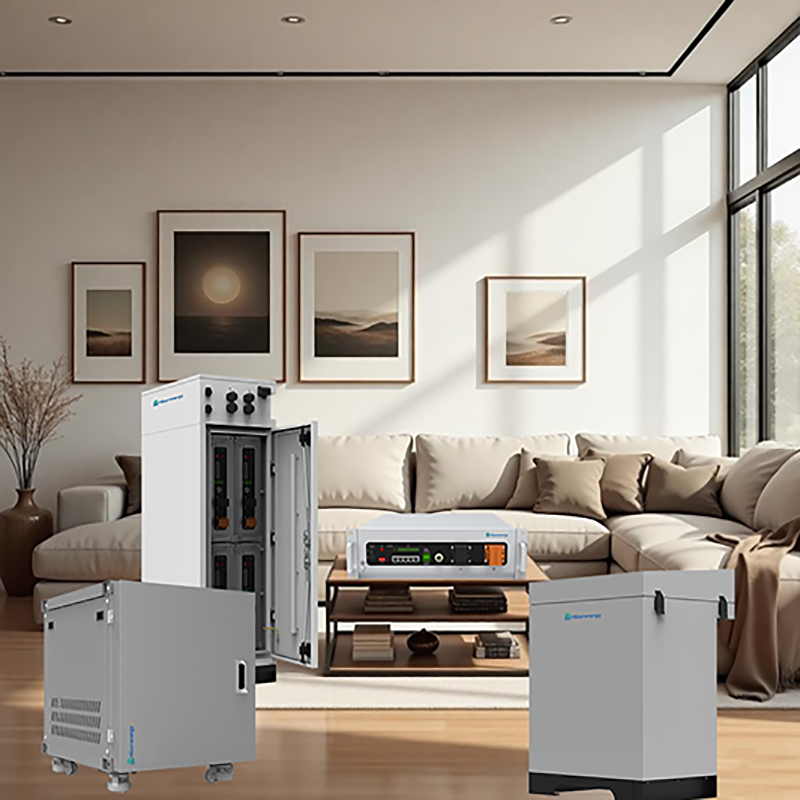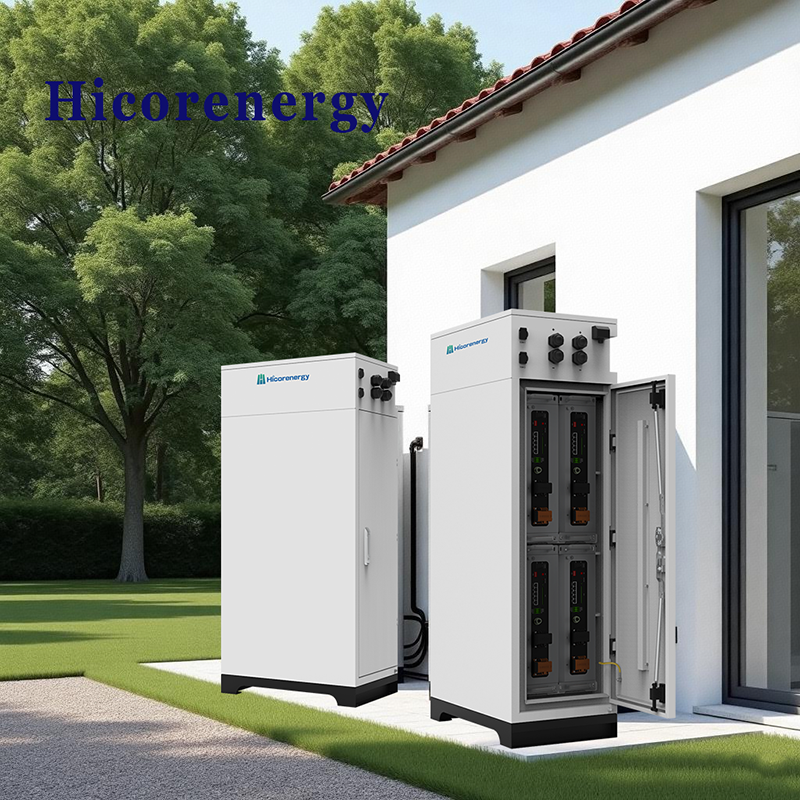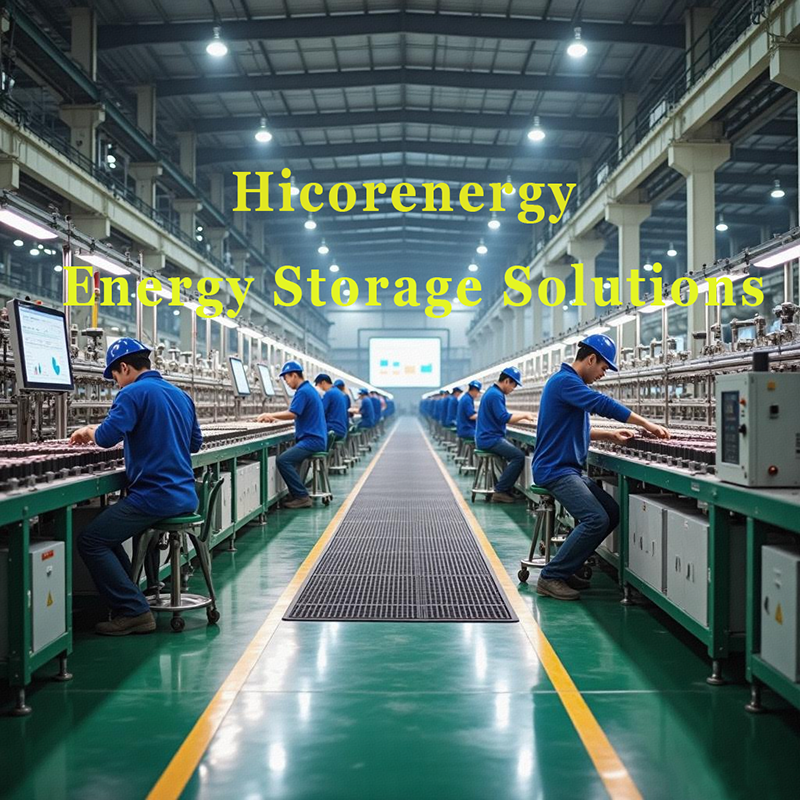Table of Contents
What is Home Energy Storage and Why is it Important?
Home energy storage systems store power from solar or the grid to use during outages or peak hours, improving energy efficiency and reducing electricity bills.

Best Types of Home Energy Storage Systems for Residential Use
Modern households benefit significantly from using advanced home energy storage systems. Among the most effective solutions available today are lithium-ion battery storage systems. These systems, such as Hicorenergy‘s I-BOX 48100R and Si LV1, are known for their high energy density, extended lifespan, and superior safety features. Lead-acid batteries, though cheaper initially, have a shorter lifespan and require regular maintenance, making them less desirable for long-term use. Hicorenergy‘s solutions are designed for flexibility, easy installation, and compatibility with most inverters, ensuring wide application from off-grid scenarios to virtual power plants. These systems also support scalability, allowing users to expand storage based on growing energy demands.
How Solar Batteries Enhance Home Energy Storage Solutions
Solar batteries provide households with greater energy independence. By storing excess solar energy generated during the day, homeowners can use it during peak demand or outages, reducing reliance on the grid and lowering utility costs.
Lithium-Ion vs Lead-Acid: Which Battery is Right for Your Home?
When selecting a home energy storage system, one of the most critical decisions is choosing between lithium-ion and lead-acid batteries. Lithium-ion batteries, like those provided by Hicorenergy, offer significant advantages in terms of energy density, lifespan, efficiency, and maintenance. For example, the I-BOX 48100R utilizes Tier 1 Automotive Grade A prismatic LiFePO4 cells and offers over 6000 cycles at 90% depth of discharge with more than 95% round-trip efficiency. This leads to a longer-lasting and more cost-effective solution over time. Additionally, lithium-ion batteries are compact, lightweight, and easier to install, whether wall-mounted or rack-mounted.
On the other hand, lead-acid batteries have a lower upfront cost but come with disadvantages such as shorter lifespan (typically 500-1000 cycles), lower efficiency, and higher maintenance requirements. They are also bulkier and heavier, which can complicate installation in limited spaces. These drawbacks often make lead-acid options less appealing for modern residential applications where space, performance, and reliability are crucial.
In climates with temperature extremes, lithium-ion batteries also outperform lead-acid types due to better thermal management. Systems like Hicorenergy’s C5° come equipped with integrated heating systems to ensure optimal performance in diverse conditions. The choice ultimately depends on budget, performance expectations, and long-term energy goals, but for those seeking a reliable and efficient solution, lithium-ion remains the preferred choice.
Key Benefits of Installing a Home Battery Storage System
Installing a home battery storage system provides several substantial benefits for homeowners. First, it increases energy independence by reducing reliance on the grid. In regions with frequent power outages or unstable supply, such systems serve as a reliable backup. Second, they help lower electricity bills by allowing users to store energy during off-peak hours and use it during peak times, optimizing time-of-use rates.
Hicorenergy’s systems, including the I-BOX 48100R and C5°, are equipped with intelligent monitoring and control features that allow users to track energy consumption, receive alerts, and remotely update the system. This enhances the user experience and minimizes after-sales issues. These systems also support various applications such as off-grid living, zero export, demand response, and peak shaving.
Another major advantage is scalability. For instance, Hicorenergy’s Si LV1 system can be scaled from 10.24kWh to 122.88kWh, providing flexibility for growing energy needs. Moreover, with warranties of up to 10 years and design lifespans extending to 20 years, these systems are designed for long-term performance and reliability.
Finally, these storage systems contribute to environmental sustainability by enabling greater use of renewable energy and reducing greenhouse gas emissions. For homeowners concerned about their carbon footprint, home energy storage systems represent a responsible and future-proof investment.
How to Choose the Right Home Energy Storage System for Your Needs

Choosing the right home energy storage system involves evaluating several key factors: energy needs, budget, space availability, and compatibility with existing systems. Hicorenergy offers a comprehensive range of solutions tailored to various household requirements.
The I-BOX 48100R is ideal for users seeking a compact, high-efficiency system with easy installation options. It is compatible with most inverters and supports vertical or horizontal installation. Its 10-year warranty and long cycle life make it suitable for homeowners seeking reliability and value.
For higher performance and intelligent management, the C5° system stands out. It features remote monitoring, real-time alerts, data visualization, and a heating system to maintain optimal battery temperature. With a wide operating temperature range and higher charge/discharge rates, it’s perfect for areas with extreme weather conditions.
Homeowners with limited installation space will find the Si LV1 appealing. This system is compact, plug-and-play, and can be installed in just 15 minutes. Despite its small footprint, it delivers powerful performance and can be scaled up to 122.88kWh. It’s ideal for those who prioritize quick setup and strong output.
For small commercial applications or larger homes, the SHV48100 system offers integrated solutions with high-voltage control boxes and battery management systems. It supports fast charging and can be expanded for greater capacity.
All Hicorenergy systems are backed by local delivery and support services, ensuring a smooth and responsive customer experience. When selecting a system, homeowners should consider long-term energy goals, local climate, available space, and the level of support offered by the supplier.
Cost of Home Energy Storage Systems: What to Expect
The cost of home energy storage systems varies depending on capacity, technology, brand, and installation complexity. Typically, lithium-ion systems have higher upfront costs compared to lead-acid systems, but they offer greater value over time due to longer life, higher efficiency, and lower maintenance costs.
For example, a basic lithium-ion setup like the I-BOX 48100R might start around a few thousand dollars but can last 10-20 years, significantly offsetting initial investments with utility savings. Premium models such as the C5° or Si LV1 may cost more due to their advanced features, but they provide enhanced performance, smart monitoring, and expandability that justify the higher price.
Additional costs may include installation fees, permits, and potential inverter upgrades. However, many regions offer incentives or rebates for energy storage, which can substantially reduce the net cost. It’s essential for buyers to consider total ownership costs over the system’s life, rather than just upfront expenses.
Investing in a quality system from a reputable provider like Hicorenergy ensures long-term performance, safety, and support. While the initial investment may seem steep, the long-term savings and benefits often outweigh the costs, making home energy storage a wise decision for many households.
Installation and Maintenance Tips for Long-Lasting Energy Storage
Proper installation and maintenance are crucial for maximizing the performance and lifespan of a home energy storage system. Start by choosing a certified installer familiar with the specific product and local regulations. Ensure the system is placed in a well-ventilated, shaded area to maintain optimal operating temperatures.
Hicorenergy systems such as Si LV1 and C5° come with plug-and-play designs and remote monitoring tools, simplifying both installation and ongoing maintenance. Installers should follow the manufacturer’s guidelines, including torque settings for connectors and software configuration.
Regularly monitoring system performance via web or mobile apps allows homeowners to detect issues early and schedule preventative maintenance. Check for firmware updates and utilize remote upgrade features to keep the system running efficiently.
Safety is also a key concern. Always use original components and avoid unauthorized modifications. Hicorenergy’s built-in BMS (Battery Management System) provides multiple protections against overcharging, overheating, and short circuits, enhancing safety and reducing the need for manual intervention.
For environments with extreme temperatures, systems with integrated heating or cooling mechanisms, such as the C5°, help maintain battery health. Keeping the area clean, ensuring proper ventilation, and scheduling professional inspections every year will further ensure long-term reliability.

Summary
Hicorenergy provides high-performance, safe, and scalable home energy storage systems for modern households.
Contact us for more information:
Email: service@hicorenergy.com
WhatsApp: +86 181-0666-0961
-scaled.png)
